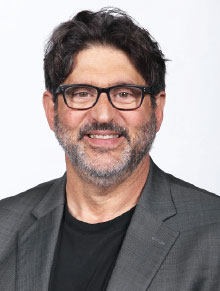Youth Suicide Rate Climbed After Debut of ‘13 Reasons Why’
Abstract
A sharp uptick in youth suicide after Netflix released “13 Reasons Why” in 2017 confirms the notion that young people are prone to suicide contagion. A toolkit was released to help clinicians prevent more tragedies as season three begins.
The suicide rate among youth spiked 29% above historical trends in the month after the release of the Netflix series “13 Reasons Why” in 2017, according to a nationwide study reported in the Journal of the American Academy of Child and Adolescent Psychiatry.

“It is important for people to under-stand that suicide is a complex response and cannot be pinned to one event that happened in a person’s life.” —Steven Adelsheim, M.D.
“The results of this study should raise awareness that young people are particularly vulnerable to the media,” said Lisa Horowitz, Ph.D., M.P.H., a clinical scientist at the National Institute of Mental Health (NIMH) Intramural Research Program and study co-author. “All disciplines, including the media, need to take good care to be constructive and thoughtful about topics that intersect with public health crises.”
Last year APA, in collaboration with other mental health and education organizations, created a toolkit to help clinicians and others navigate some of the sensitive topics graphically depicted on the show: youth suicide, school violence, sexual assault, bullying, and substance use.
To evaluate the association between the release of “13 Reasons Why” and U.S. suicide rates, Jeffrey A. Bridge, Ph.D., and colleagues examined suicide data from the Centers for Disease Control and Prevention for a five-year period spanning 2013 to 2017. Bridge is an epidemiologist in the Center for Innovation in Pediatric Practice at the Research Institute at Nationwide Children’s Hospital and an associate professor of pediatrics at the Ohio State University College of Medicine in Columbus.
In the month following the March 31, 2017, release of the series, the suicide rate was the highest of the five-year study period. Researchers also found that the suicide rate for 10- to 17-year-olds in the months of April, June, and December 2017 was significantly higher than what would be expected.
Moreover, in the months following the series release, researchers said there were 195 more youth suicides than expected, given historical trends. The spike was primarily due to an increase in suicide among young males; increases in suicides by females were not statistically significant. Suicide attempts by females may have increased as well, but these data were not available for the analysis, the authors added.
Netflix did not respond to a request for comment on the study.
Series Skirts Guidelines for Avoiding Suicide Contagion
Based on a young adult novel of the same name, “13 Reasons Why” tells the story of high school student Hannah Baker who dies by suicide after being bullied, assaulted, and betrayed by peers. All are depicted in season one of the series in extremely graphic detail—as is a suicide attempt by a male friend using a firearm. Such graphic depictions ignore media guidelines created to avoid suicide contagion, pointed out Steven Adelsheim, M.D., a clinical professor and director of the Stanford Center for Youth Mental Health and Wellbeing at Stanford University School of Medicine. Adelsheim is a member of APA’s Council on Children, Adolescents and Their Families.
“It is important for people to understand that suicide is a complex response and cannot be pinned to one event that happened in a person’s life,” he said, adding that Hannah’s continued appearance throughout the first and second seasons of the show—watching her peers’ reactions to her suicide and to the audiotapes she leaves behind—may give youth the false and dangerous notion that individuals who die by suicide somehow live on.
APA teamed up with other national organizations in an effort led by SAVE (Suicide Awareness Voices of Education) to create a toolkit prior to the release of the second season of “13 Reasons Why” in May 2018. The idea of the toolkit is to help encourage conversations among young people, identify those at risk for suicide, and prevent more tragedies.
APA focused on creating a section aimed at helping clinicians talk to patients who might be influenced by the series. The toolkit advises clinicians on how to provide guidance on viewing, promote help-seeking behaviors, create safety plans with their patients, and support youth at risk. Other toolkit sections are designed for parents, educators, youth, and the media.
The toolkit may prove especially helpful now that Netflix is planning to release season three of “13 Reasons Why” any day.
“It is possible to portray suicide in a way that cultivates hope by increasing awareness of available supports for those who struggle with suicidal thoughts or behaviors,” Horowitz and colleagues wrote. “Accurate, humanizing depictions of an individual coping with suicidal thoughts, seeking help when distressed, and modeling resilience may, in fact, reduce suicidal behaviors.”
The study was funded by NIMH. ■



